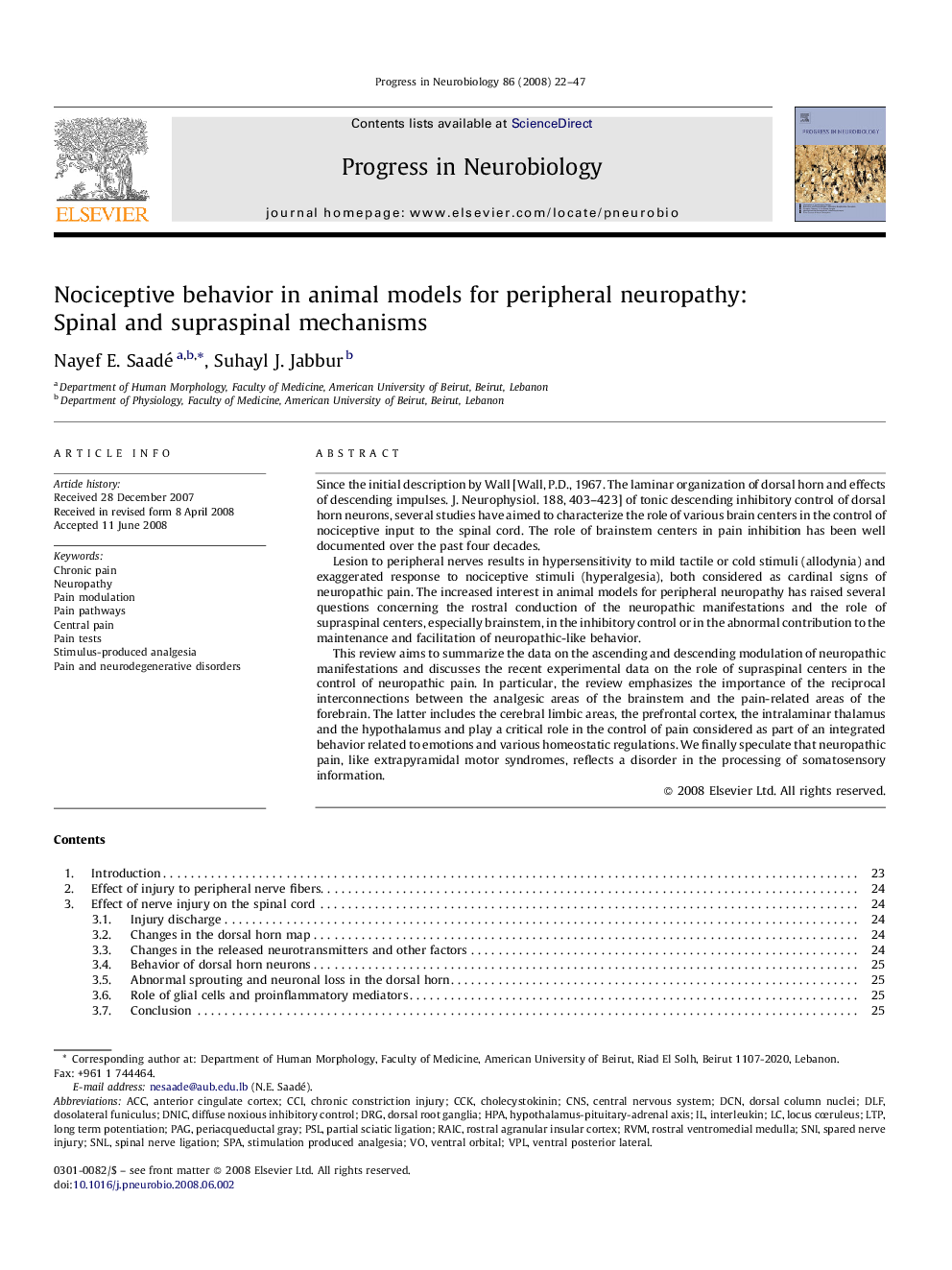| Article ID | Journal | Published Year | Pages | File Type |
|---|---|---|---|---|
| 4353695 | Progress in Neurobiology | 2008 | 26 Pages |
Since the initial description by Wall [Wall, P.D., 1967. The laminar organization of dorsal horn and effects of descending impulses. J. Neurophysiol. 188, 403–423] of tonic descending inhibitory control of dorsal horn neurons, several studies have aimed to characterize the role of various brain centers in the control of nociceptive input to the spinal cord. The role of brainstem centers in pain inhibition has been well documented over the past four decades.Lesion to peripheral nerves results in hypersensitivity to mild tactile or cold stimuli (allodynia) and exaggerated response to nociceptive stimuli (hyperalgesia), both considered as cardinal signs of neuropathic pain. The increased interest in animal models for peripheral neuropathy has raised several questions concerning the rostral conduction of the neuropathic manifestations and the role of supraspinal centers, especially brainstem, in the inhibitory control or in the abnormal contribution to the maintenance and facilitation of neuropathic-like behavior.This review aims to summarize the data on the ascending and descending modulation of neuropathic manifestations and discusses the recent experimental data on the role of supraspinal centers in the control of neuropathic pain. In particular, the review emphasizes the importance of the reciprocal interconnections between the analgesic areas of the brainstem and the pain-related areas of the forebrain. The latter includes the cerebral limbic areas, the prefrontal cortex, the intralaminar thalamus and the hypothalamus and play a critical role in the control of pain considered as part of an integrated behavior related to emotions and various homeostatic regulations. We finally speculate that neuropathic pain, like extrapyramidal motor syndromes, reflects a disorder in the processing of somatosensory information.
